#Human Extinction Using Artificial Intelligence
Explore tagged Tumblr posts
Text
youtube

Stargate is a 1994 science fiction action-adventure film directed and co-written by Roland Emmerich. The film is the first entry in the Stargate media franchise and stars Kurt Russell, James Spader, Jaye Davidson, Alexis Cruz, Mili Avital, and Viveca Lindfors. The plot centers on the titular "Stargate", an ancient ring-shaped device that creates a wormhole, enabling travel to a similar device elsewhere in the universe. The central plot explores the theory of extraterrestrial beings having an influence upon human civilization.

Less than Zero is a 1987 American drama film directed by Marek Kanievska, loosely based on the 1985 novel of the same name by Bret Easton Ellis. The film stars Andrew McCarthy as Clay, a college freshman returning home for Christmas to spend time with his ex-girlfriend Blair (Jami Gertz) and his friend Julian (Robert Downey Jr.), both of whom have become drug addicts. The film presents a look at the culture of wealthy, decadent youth in Los Angeles.
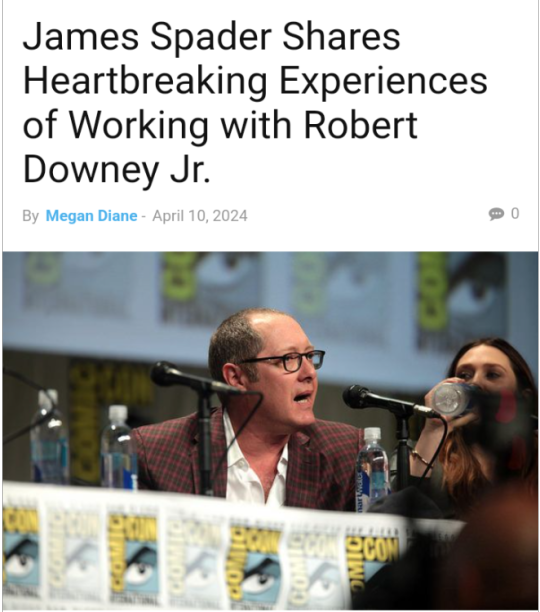
Key Takeaways:
– James Spader recollects his time working with Robert Downey Jr. during ‘Less Than Zero'.
– The co-star noticed how Downey Jr.'s destructive lifestyle influenced his performance.
– Spader admired Downey Jr.'s turnaround when they next met on the set of Avengers: Age of Ultron.
Globally acclaimed actor Robert Downey Jr. is widely acknowledged for his phenomenal roles in the Hollywood film industry. Within his illustrious career, his portrayal of Tony Stark in the Marvel Cinematic Universe (MCU), starting with Iron Man, stands out. However, even successful journeys have challenging beginnings. For Robert Downey Jr., his journey was marred by a period of drug abuse and legal troubles.
James Spader, co-star of Robert Downey Jr. in the 1987 drama ‘Less Than Zero', recently shed some light on his experience working with Downey Jr. during these testing times. Spader elucidates upon the heartbreaking moment he observed Downey Jr., a talented actor, struggling with destructive habits on the set of ‘Less Than Zero'. His concern for his co-star was compounded by the character Downey Jr. played – an addict.
“I'm gonna go drain the snake,” Downey Jr. would often mumble to himself during filming, leaving his co-star and others on set perplexed.
Downey Jr.'s character in ‘Less Than Zero' is often viewed as a mirror reflection of the actor's tumultuous past, with real-life drug abuse issues being mirrored on-screen. An actor of Downey Jr.'s caliber and his involvement borderline signaled a cry for help that resonated with his audience. This deep connection between his life's challenges and his screen roles turned Downey Jr. into Hollywood's dark horse at that time.
Spader retold his experience about Downey Jr.'s deplorable state during the filming of ‘Less Than Zero', “I found him heartbreaking in ‘Less Than Zero,' and I found him heartbreaking at the time.”
RDJ's physical deterioration, evidenced by patches of dead skin, only made the situation look grim.
However, as they say, every cloud has a silver lining. Downey Jr. made a remarkable turnaround with his life and career. His subsequent meeting with Spader on the set of Avengers: Age of Ultron as a changed person would have been a proud moment for the Blacklist actor. His journey from self-destruction to being one of the biggest stars in Hollywood is nothing short of inspirational.

In the film, the Avengers fight Ultron (Spader)—an artificial intelligence created by Tony Stark (Downey) and Bruce Banner (Ruffalo)—who plans to bring about world peace by causing human extinction.

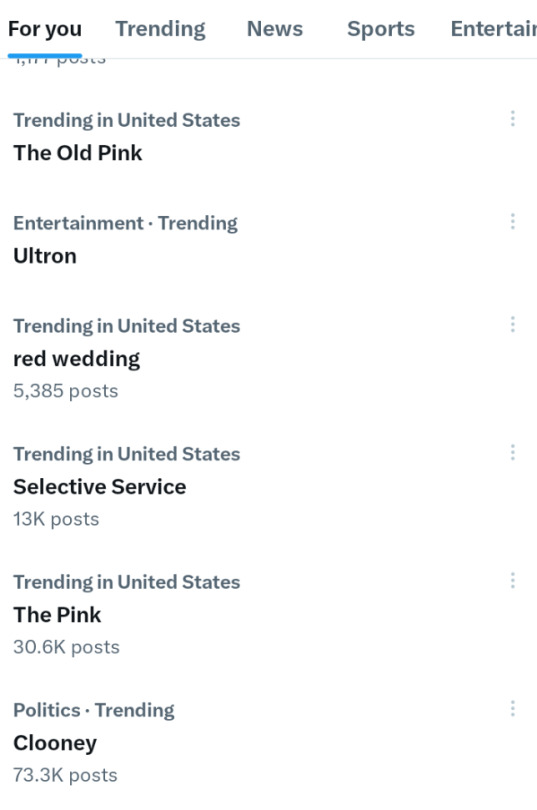
I don't need to say ONE WORD. The crap loads of Predictive Programming from just three projects says it all. I mean... besides milking it for more sympathy, why keep bringing up RDJ's past drug use? It's pretty humiliating, but also must have a purpose.
Bonus:


#Youtube#WHAT IS CERN?#James Spader#Stargate#Less Than Zero#Age of Ultron#Godless Science#Human Extinction Using Artificial Intelligence#THEY REALLY DON'T WANT PEOPLE TO LIKE AI WITH THIS CRAP GOING ON#WHAT'S THE RULE?#IF WE DON'T NOTICE WHAT'S GOING ON IT'S OUR OWN FAULT#RIGHT?#SILICON VALLEY#ISRAEL#WEF#SWITZERLAND#Robert Downey Jr#Iron Man#Truthunedited#Sex Lies and Videotape#Harvey Weinstein#Freemasons#Satanic Cult#Ultron#Marvel#Stephen Colbert#Hollywood Gay Mafia
4 notes
·
View notes
Text
Book recs: alien intelligences
Intelligent spiders, octupi, plants, bacteria, and even entire oceans, intelligence without sentience, extra terrestrials and strange intelligences evolved right here on Earth - alien minds can take many forms. Allow me to share with you some books featuring the most alien and fascinating ones.

Previous book rec posts:
Really cool fantasy worldbuilding, really cool sci-fi worldbuilding, dark sapphic romances, mermaid books, vampire books, many worlds: portal fantasies, many worlds: alternate timelines, robots and artificial intelligences, post- and transhumanism
For more details on the books, continue under the readmore. Titles marked with * are my personal favorites. And as always, feel free to share your own recs in the notes!
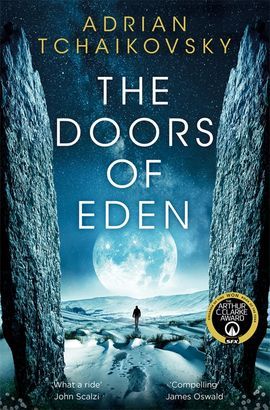
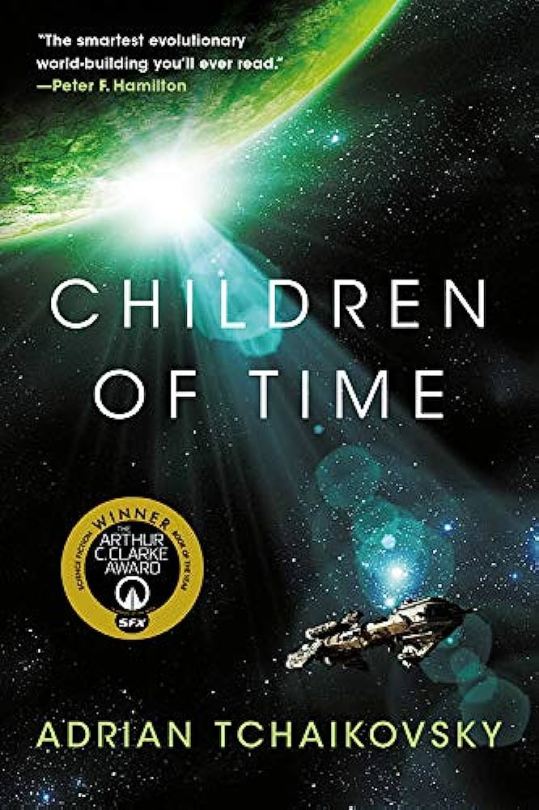
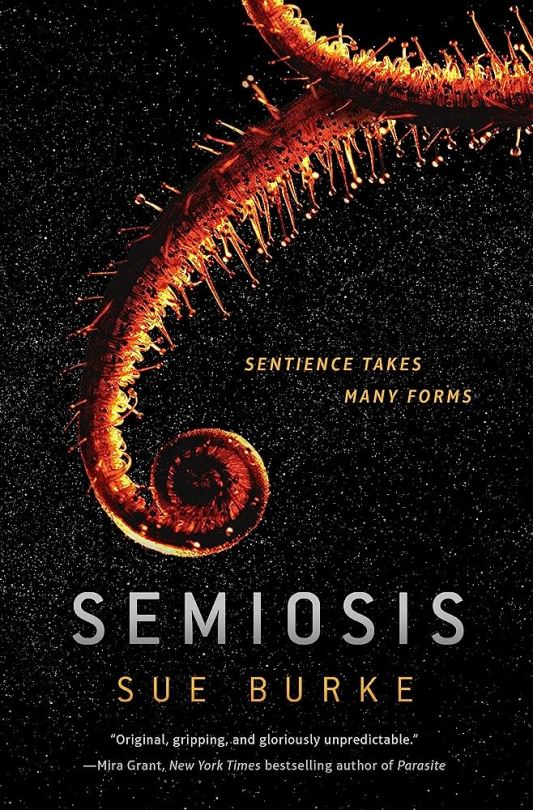
The Doors of Eden by Adrian Tchaikovsky*
The Doors of Eden is something of an experiment in speculative biology, featuring versions of Earth in which various different species were the one to rise to sentience, from dinosaurs to neanderthals. Now, something is threatening the existence of all timelines, dragging multiple different people and species into the struggle, among those a pair of cryptid hunting girlfriends and a transgender scientist.
Children of Time by Adrian Tchaikovsky*
Millenia and generation spanning scifi. After the collapse of an empire, a planet once part of a project to uplift other species to sentience is left to develop on its own, resulting not in the intelligent monkeys once intended but in sentient giant spiders. Millenia later, what remains of humanity arrives looking for a new home, only to be met by the artificial remains of the ancient woman who once led the uplift project - and she is not willing to let them on her planet.
Semiosis (Semiosis duology) by Sue Burke
A generational story following a group of humans trying to survive on a new planet, where a strange and unkowable intelligence is finding ways to use them to its whims. As the humans come across an abandoned city wrapped in the roots of a strange plant, they slowly come to the realization that mutual communication is the only path to peace and survival.

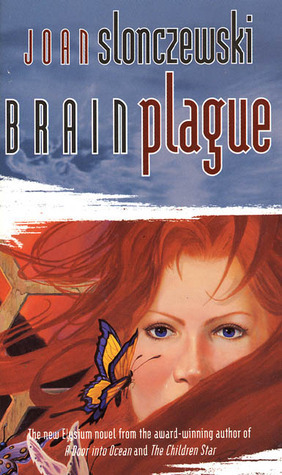
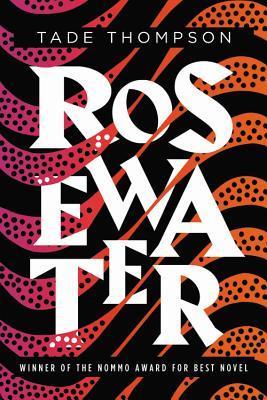
The Three-Body Problem by Cixin Liu
While I felt the characters could’ve been better developed, this is undeniably a well-written novel featuring an alien race and culture developed on a planet vastly different from ours. Firmly in the realm of hard scifi, this is a realistic, fascinating and slightly terrifying look at how first contact may look.
Brain Plague (The Elysium Cycle) by Joan Sloncewski*
Chrys, a struggling artist, agrees to become a carrier for a sentient strain of microbes. With their help, Chrys breathes new life into her career. But every microbe society is different - some function as friends and brain enhancers to their carrier, while others become a literal brain plague, a living addiction taking over the life of their carrier. And like every society, the microbe community is in constant flux - inluding the one inside Chrys's head.
Rosewater (The Wormwood trilogy) by Tade Thompson
In Nigeria lies Rosewater, a city bordering on a strange, alien biodome. Its motives are unknown, but it’s having an undeniable effect on the surrounding life. Kaaro, former criminal and current psychic agent for the government, is one of the people changed by it. When other psychics like him begin getting killed, Kaaro must take it upon himself to find out the truth about the biodome and its intentions.

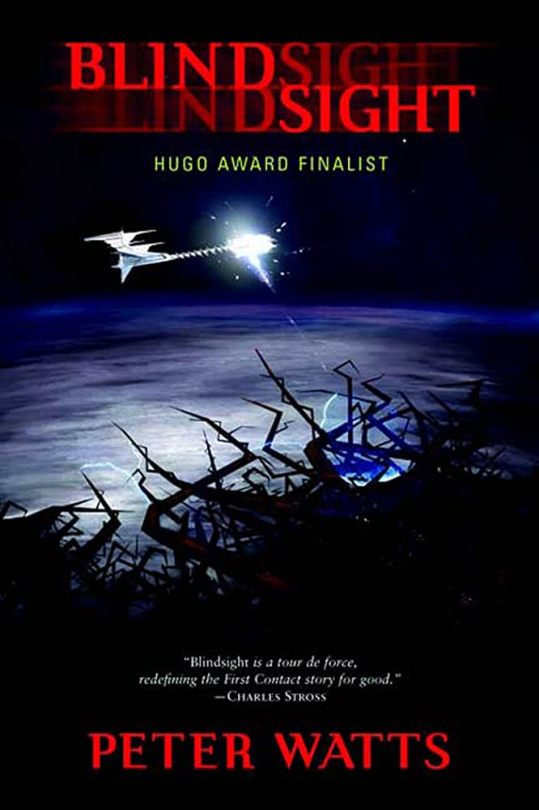

Dawn (Xenogenesis trilogy) by Octavia E. Butler*
After a devestating war leaves humanity on the brink of extinction, survivor Lilith finds herself waking up naked and alone in a strange room. She’s been rescued by the Oankali, who have arrived just in time to save the human race. But there’s a price to survival, and it might be humanity itself. Absolutely fucked up I love it I once had to drop the book mid read to stare at the ceiling and exclaim in horror at what was going on.
Blindsight by Peter Watts*
Vampires and aliens and questions of the nature of consciousnesses, oh my. A ship is sent to investigate the sudden appearance of an alien vessel at the edge of the solar system, but the crew, a group of various level of transhumanism, isn’t prepared for the horrors awaiting them. No, seriously, this book will fuck you up, highly recommend if you’re okay with a lot of techno babble and existential horror.
Midnight Robber by Nalo Hopkinson*
Utterly unique in world-building, story, and prose, Midnight Robber follows young Tan-Tan and her father, inhabitants of the Carribean-colonized planet of Toussaint. When her father commits a terrible crime, he’s exiled to a parallel version of the same planet, home to strange aliens and other human exiles. Tan-Tan, not wanting to lose her father, follows with him. Trapped on this new planet, he becomes her worst nightmare. Enter this book with caution, as it contains graphic child sexual abuse.
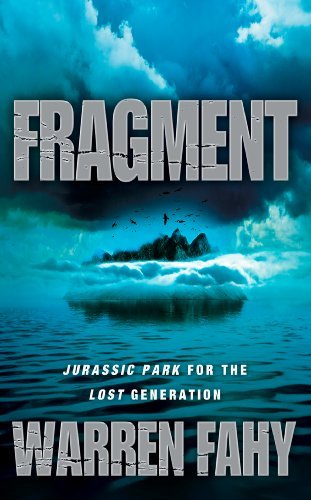
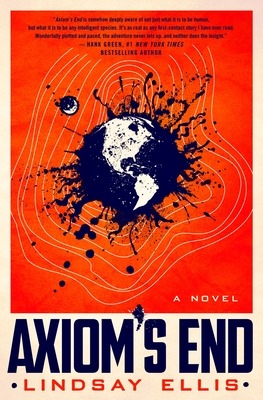

Fragment (Fragment duology) by Warren Fahy*
The reality TV show Sealife is having a rough time - as it turns out, a ship full of scientist doesn’t make for the kind of drama they hoped for. Hoping for some excitement, they reach Hender's Island, a fragment of a lost continent that may contain an interesting new ecosystem. But as they step foot on the island, they quickly come to realize the ecosystem isn’t just new, it’s highly dangerous and very hungry. Among all this life is one single species that may be more dangerous than any other, but which may also be the salvation of the scientists on the island. A bit wonky, but genuinely one of the most fun books I have read, I love it so much.
Axiom's End (Noumena trilogy) by Lindsay Ellis
It’s 2007, and a leak has just confirmed that the US has reached alien contact. Cora wants nothing to do with it, but as her absent father is the whistleblower who dropped the news the media won’t leave her alone. Even worse, she soon finds herself meeting and being pursued by the alien presence itself as it tries to remain in hiding - and discovering that there is a much larger threat on the horizon.
The Road to Roswell by Connie Willis*
Francie has just traveled to Roswell to attend her college friend's wedding to a UFO conspirasist. Not a believer herself, Francie is shocked when she finds herself abducted by an alien. Her abductor is not much what popular media would have you believe, looking more like a tumbleweed than a grey alien, and is clearly on some kind of mission it isn’t willing to put on hold for the sake of Francie attending to her duties as a bridesmaid. As more people get roped along - among those a conman, an old lady, a ufo conspirasist, and a retiree with an RV - Francie finds herself getting closer to the alien and wanting to help it succeed.
Bonus rec: if you like this book, you may also enjoy the movie Paul, which has a similarly humorous tone and similar plot.
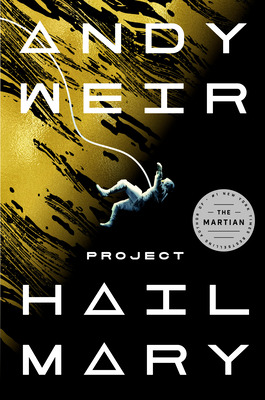
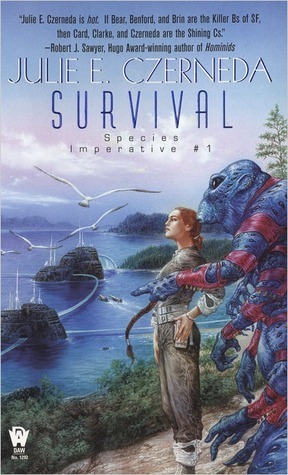
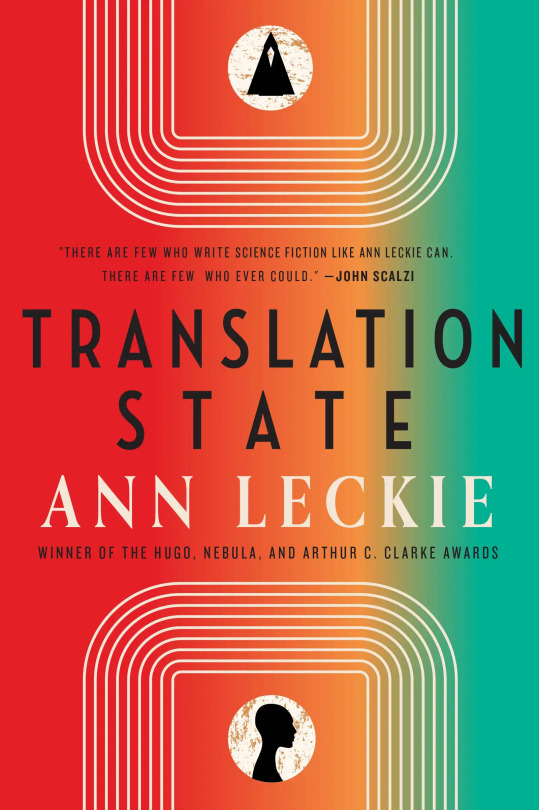
Project Hail Mary by Andy Weir*
Ryland Grace just woke up up from a coma, unable to remember anything. He finds himself alone on a space ship, and as his memories slowly trickle back, he realizes he's been sent on a mission: to find a solution to the impending doom of the earth. Still struggling with holes in his memories, Ryland tries to fulfill his mission, but as he gets closer to his goal, he discovers someone else got there first. And they aren't anything close to human. Funny, heartfelt, and heavy on the science.
Survival by Julie E. Czerneda
Mac, a biologist studying salmon on Earth, has little interest in life beyond her own planet. Despite this, she’s sought out by Brymn, an alien archaeologist hoping her expertise as a biologist can help him solve the secret behind the Chasm, a region of space completely devoid of life. Trying as she might not to get incolved, Mac has little choice as she and her colleagues come under attack by the mysterious Ro, the species Brymn's people suspect to be the cause of the Chasm.
Translation State by Ann Leckie*
An exploration of the alien as filtered through the human. At what point does the human become something else? When does something else become human? Is it a question of biology or culture, nature or nurture? Can we choose it? Can it be forced upon us? Set in the Imperial Radch universe, Translation State follows three different characters embroiled in the question of what makes a human. The alien Presger can only communicate with humans using their translators - people they’ve created that are not quite human and not quite alien. But as news of a translator fugitive arises, conflict brews regarding what right they have to choose their own identity and home.
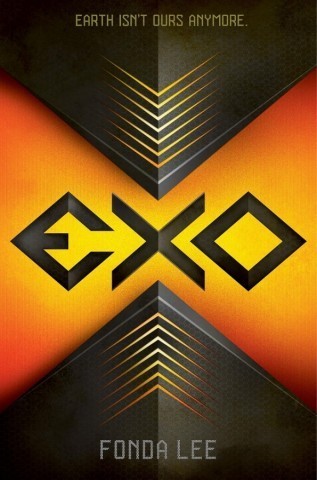

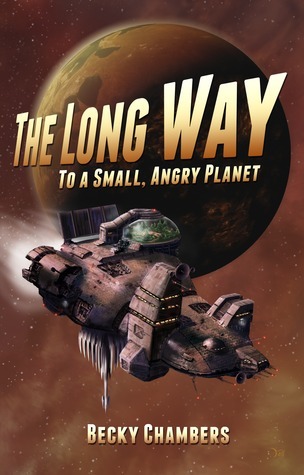
Exo (Exo duology) by Fonda Lee*
Young adult. Earth has long since been under the control of an alien presence. Donovan Reyes is an exo, a human enhanced with alien technology, working to keep the colony and its people safe. The biggest enemy is Sapience, a terrorist organisation opposing alien rule by any means necessary. When a mission goes awry, Donovan finds himself abducted by Sapiance, something that risks a war. While it took until the second book for me to be fully sold on this series, it features a genuinely nuanced take on oppression and resistance rarely seen in YA genre.
Needle by Hal Clement
1950s classic. A small island in the pacific ocean and a fourteen-year-old boy have just become the center of an interstellar chase between an alien Hunter and the criminal he's pursuing. Robert is a regular boy, but he has a very special passenger: an alien symbiont hiding inside his body. The alien became stranded on Earth as he pursued a criminal of his own species, and now they are both trapped on the same island, playing a game of cat and mouse as Robert and the Hunter struggle to find their prey before it finds them.
The Long Way to a Small, Angry Planet (Wayfarers series) by Becky Chambers
Rosemary Harper just got a job on the motley crew of the Wayfarer, a spaceship that works with tunneling new wormholes through space. With a past she wants to leave behind, Rosemary is happy to travel the far reaches of the universe with the chaotic crew, but when they land the job of a life time, things suddenly get a lot more dangerous. A bit of a tumblr classic in its day, this is a cozy space opera with an episodic feel and vividly realized characters and cultures.

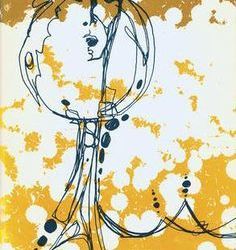

Under the Skin by Michel Faber
A dark allegory of alienation and dehumanization, Under the Skin follows Isserley, a woman traveling along the roads of England and picking up hitchhikers. Little does her passengers know, she’s an alien hiding her true self, and they are her prey and a delicacy for her species.
Solaris by Stanislaw Lem
1960s Polish classic. Arriving on a station orbiting the planet Solaris, Kris Kelvin is meant to study the strange, possibly sentient ocean that covers its entire surface. But the effects of the ocean are far reaching - Kelvin finds the crew of the station secretive and unstable, and is shocked to wake one day to the embodiement of a long dead lover. Was it created by the brain-like ocean, and if so, why?
West of Eden (West of Eden trilogy) by Harry Harrison
65 million years ago, the meteor that killed the dinosaurs never arrived. Without it, the dinosaurs lived and thrived, allowing a the complex society of the matriarchal Yilanè to arise. Meanwhile, in the new world, humans still evolve, and when an impending ice age forces the Yilanè across the ocean in search for a new home, the two are destined to clash. A bleak story of the cycle of violence and hate leading to war, West of Eden is a marvel of world-building.
Bonus AKA I haven't read these yet but they seem really cool
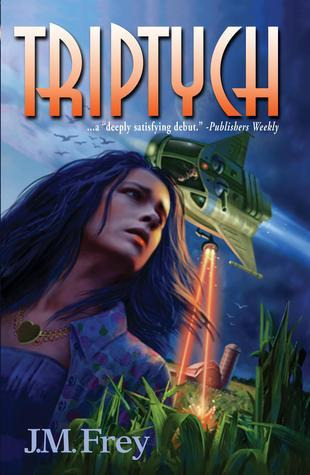
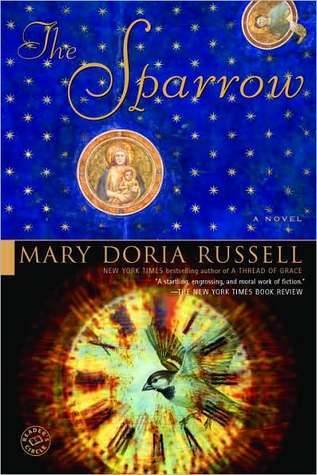
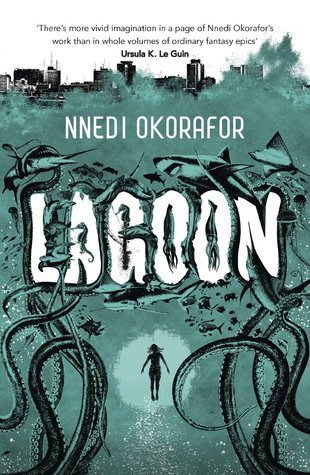
Triptych by J.M. Frey
Kalp is a widower and alien refugee newly arrived on Earth; Gwen is a language expert secretly recruited by the United Nations to help integrate a ship of alien refugees; Basil is an engineer who loves them both. Together they must defend their relationship against a violently intolerant world.
The Sparrow (The Sparrow duology) by Mary Doria Russell
When proof of alien life is found, the United Nations are too slow in their plans for a first contact mission. Instead, the Society of Jesus overtake them and send their own ship, but the crew could never have been prepared for what they will find.
Lagoon by Nnedi Okorafor
Something massive and alien crashes into the ocean off the coast of Nigeria. Three people, a marine biologist, a rapper, and a soldier, find themselves encountering this presence, and have to race to save humanity before it's too late.
Honorary mentions AKA these didn't really work for me but maybe you guys will like them: Salvaged by Madeleine Roux, Exodus by Nicky Drayden, The Lesson by Cadwell Turnbull, Embassytown by China Miéville
#nella talks books#the doors of eden#children of time#semiosis#the three-body problem#brain plague#rosewater#xenogenesis#blindsight#midnight robber#fragment#axioms end#the road to roswell#project hail mary#species imperative#translation state#exo#needle#the long way to a small angry planet#under the skin#solaris#west of eden#there are more alien centric books that I love#but this list is pretty focused on books where the truly alien unkowable and inhuman is central#so anything featuring human looking or acting aliens got disqualified#same as books where the aliens themselves weren’t very central#also i need you all to know that i have had official art of the 'alien' from Fragment as my screensaver for a decade#that book is so silly goofy dialogue and absolute gory slaughter i love it so much#i still have one of these rec posts in my drafts but! will soon post a new poll in preparation for more
811 notes
·
View notes
Text
Who wants to meet my TWST AU Hades Shroud? Too bad, I decided for you. (I know I said I'd do Azul next, but I just got smacked with inspiration, so here he is. Technically, if I was going by TWST cannon, his name would be Pluto as they use the Roman Pantheon names instead of the Greek Pantheon via the titans hating Jupiter)
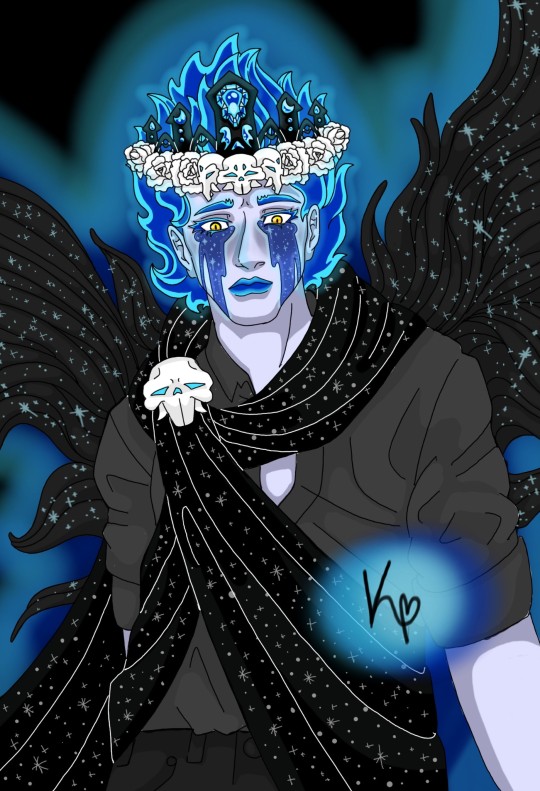
Hades is about 50ft (15.24m) tall in his regular form, his limbs are similar to Idia's in that his limbs are long and gangly compared to the rest of his body. In his 'small' form, he is around 10ft (304.8cm). He is over 5000 years old and has seen ages go by from his home, the Isle of Woe. As King of the Shinigami, many souls pass through his halls and it is his job to ensure all dead are lain to rest. Shinigami do not die of old age as they were never really living, but they can be killed and usually their soul does not remain after their actual death.
His face is stained by the tears he has shed for his lost humans, forever marked by his own sorrow and heartbreak. He did love Humans and all of their intelligence. Humans were never pets to the ancient Shinigami, they were smart and plucky and had beautiful hearts. Every Human that died, on or off of the Isle, returned to Hades. Those that passed peacefully were happy to see their friend and benefactor again on their way to rest. Most did not pass peacefully. Most returned broken and screaming souls, tortured and tormented by their last moments to the point of insanity, only able to scream and sob even when reunited with Hades.
His shawl was formed out of his sorrow and the grief he felt every time another Human soul came back to him broken. He has not fully removed the shawl since the death of the last Human in Twisted Wonderland. It is said every sparkle and star seen in his wings, shawl, and tear-stains are all meant to represent a Human soul. He has thousands on his figure and he remembers the name of each one. The larger stars are the Humans he remembers most fondly, the smaller stars are Humans he didn't get to form very close bonds with as they left or died before he could truly bond with them. Usually it covers his entire body and can be pulled up as a hood over his head, but he tied it up for the first time in centuries for his meeting with this new Human of Night Raven College.
His heart was shattered when his Humans died and he has been in true deep mourning for 500 years, hence why his tears have permanently stained his face. Of all the Great Seven, only Maleficent comes close to how much he respected and loved Humans. Others loved Humans, sure, but few respected them the way the God of Death did. The sheer will of Humans to defy death and live in a world they did not really belong in truly spoke to the Shinigami in ways he never expected. He will fight and give up his own ancient life to save this last Human the same wailing and terrified death almost every other suffered from.
He does hope this new Human will allow him to study their womb to try and make an artificial womb to bring more Humans back to Twisted Wonderland. He has a fairly large store of Human eggs and sperm he has never been able to grow into full Humans, so the research he could do on this Last Human could help him bring Humans back from extinction. If the Human is willing, the best way for him to research the creation of a Human and carrying it to term would be best done by implanting a frozen embryo into the Human and letting it grow to term. He would never do such a thing unless the Human was absolutely certain and willing in this research.
Ortho is the baby of the Shroud family and Hades absolutely adores Ortho. He feels partially responsible for Ortho's injuries and has done what he can to aid Idia in making new limbs for Ortho. The entire Shroud family calls Hades 'Papa Hades' as he is their ancestor and he is the eldest of the family. Even his Humans called him Papa Hades. It would likely begin to heal some deeply broken part of his heart to hear this Last Human call him by that title as well. If they ever do call him Papa Hades, he will pledge everything he has left in him to their protection and safety.
#kiame-sama#yandere#platonic yandere#x reader#yandere x reader#reader insert#tw yandere#humans are extinct twst au#Hades Shroud
126 notes
·
View notes
Text
Aliens are floored by tardigrades
Life is pretty resilient. It has to be, especially if the rest of the Galaxy thinks we're from a Deathworld. In comparison then, if their planets are not as demanding, would life there ever be under enough pressure to survive to go to the extreme lengths that some Earth creatures do? I think one of the most profound things aliens might learn from Earth and Humanity is just how powerful life itself can be.
That itself could shake their understanding of themselves - a billion year old civilization could never even conceive of a thing we accept as simple fact, ushering a revolution in thinking not seen in eons.
___________________________
The Galactic Coalition scientists are busying themselves with obtaining, analyzing, categorizing, and integrating the libraries of information Humanity has brought with them as they incorporate into the greater space faring matrix of civilizations.
A good grasp of Physics, though lacking in certain fields for now; unmatched Engineering doctrines, they really do think of everything, although, perhaps, better to say - they really do attempt everything, then take notes and improve for the next attempt.
Chemistry is another fine addition to the collective knowledge base, a disproportionate part of the catalogue is comprised entirely of explosive reagents and combinations - always good to know more about what NOT to do.
And Biology. Oh boy. What a chaotic but beautiful but also disturbing mess. Life on most planets has a long period of just chugging along, surviving as best it can, until eventually something has the bright idea to evolve the ability to have bright ideas. Then in almost no time at all (on a cosmic scale) a dominant intelligence emerges and civilization alongside it, and in the blink of an eye it finds itself exploring the stars.
A similar pattern happened on Earth, but interrupted alarmingly often by utter catastrophes. Humans call them Mass Extinctions. It is exceedingly rare to find life that can talk about its own extinction events. Kind of deflates the term a bit. Life on planets as inhospitable (by Galactic norms) as Earth tends to be found only as fossils, and almost always on the microscopic level - very rarely do they get the chance to form more complex and advanced lifeforms before the planet with its harsh conditions and scarce resources kills it just as randomly as it spawned it.
We were incredibly saddened to learn from the Humans that the biodiversity of Earth had dwindled by roughly 85% since they accidentally created that giant hole on their planet, and that it had already been on a steady decline before then. Even so, when they revealed there were still 2.4 million species alive on Earth was a shockingly high number. Most are on the brink of extinction, yes, but the fact remains that Earth is easily one of the most biodiverse planets in the Galaxy.
Then we started looking at each individual species and learned about the Tardigrade.
what
It is literally the toughest creature ever discovered, and it's not even close. At least, so far, we haven't looked at absolutely everything Earth has or had yet.
It can just... basically turn itself off and then back on again when the outside becomes livable again - Cryptobiosis, or suspending their metabolism, something we considered only possible through artificial means. And the levels of various extreme they can endure and still be alive would just be utterly ridiculous if they didn't give us samples to confirm for ourselves.
Then we came across the term Extremophile and just decided to take a day off.
#earth is weird#earth is space australia#earth is a deathworld#nature is weird#tardigrade#that's how my brain works#I too learned of that term only now#so it was time to stop before things got out of hand#carionto
443 notes
·
View notes
Text
Select an alternate universe to study abroad in for a semester. You'll be sent there with a new body that matches inhabitants of that realm. Little to no time will pass in your world, as time between dimension is entirely diffeent. Wherever you choose to go you won't be known to be from another dimension unless you tell people.
1- an endless forest made of massive trees, so tall no mortal soul has seen the ground or the unobstructed sky. The sentient races of this world consist of slender owl like humanoids, various insectoid races, short squat mushroom people, and a minority of rodent like creatures who live further down the trees. Technology in this world is as advanced as ours, but the aesthetics are more similar to our Victorian age. They say this world's heaven is deep above the trees, and this world's hell is deep below it, with each culture's religion having its own version of God/gods above an devils in the forest floor (outside of the mushroom people, who worship gods below.)
2- an endless system of volcanic caves and tunnels that demons and fallen angels come from. This realm is vast, and is ruled over by countless lords and kings, some truly evil, some merely strange. Demons and fallen angels come is countless forms, most looking somewhat humanoid, though with strange and unnatural distortions, from animal like parts to things humans would find much more horrifying. This is one of the few realms listed where they know what earth is, but they don't know much about it outside of myth.
3- an alternate earth where mythical creatures such as vampires, werewolves, deep ones, dragons, and witches exist. It also has a population of demons and faeries who came over generations ago. While they were in hiding for many millennium, they've now taken over most of earth, with humans being removed or conquered in some regions, and peacefully integrated into others. Though in both cases they are now a minority.
4- a version of earth that's both flat and entirely endless, with many sun's carving safe warm zones in the ice. Even with 21st century technology new lands are still being explored. Most social problems still exist, but things are looking a bit more hopeful, and the world's slightly nicer to live in. Cryptids, gods, magic and the afterlife are all proven to exist, even if humanity doesn't know much about them. Human bodies here naturally trend twords looking however the person inside them wants to look, and sexual attraction and pleasure don't exist.
5- an alternate earth where the kpg mass extinction never occurred. Dinosaurs remained dominant but kept evolving, leading to a sapient race eventually emerging from raptors. The raptors are currently at a similar technology level as us, though due to how they're mind works they've spent more time developing computers and mathematics than they have any other field of technology. Also don't mind the obelisk in the pacific ocean, nobody there knows what it does or who put it there either, and we won't put you anywhere near it.
6- a world filled with giant monsters of all kinds, some looking like massive dragons or Chimeras, others looking like more strange and colorful creatures. Though some animals are smaller, the smallest intelligent creatures are the size of bears, and the largest are much bigger than blue whales. Technology is limited in some regards, mostly as the inhabitants don't always need it.
7- the world of the faeries, strange and complex, and both terrifying and beautiful. Very little is known about this realm other than the strange and often dangerous creatures who come from this place. If you go here it's likely you will remember very little and enjoy very much.
8- a universe where humanity is completely isolated to spaceships and space stations, most of them the size of cities. Humans here are grown artificially, and have completely androgynous bodies that lack biological sex, and most of them combine their bodies with mechanical upgrades becoming cyborgs. Most humans never touch a planet, and those who do don't stay there for long. There are a few alien species with planetary civilizations, but almost all of them are strange and eldrich. Technology is incredibly advanced compared to ours, and quality is life is better. Most humans consider AI taboo, though normal computers are fine and commonplace.
9- a world where humans are entirely missing, but every species of mammal is sapient and humanoid. Birds and reptiles pick up the pace of animals in the ecosystem, as the mammals have created a global civilization. Though magic doesn't exist here, and technology is around a 21st century level, the quirks of each species have created a lot of situations impossible in our world. Though several nations exist, the main powers of the world consist of a group of powerful corporations, an ancient secret society, and the church of the dead gods, all of whom are locked in a cold war, that luckily keeps the nations of this world at peace.
10- a massive city, floating in the void, surrounded by eldritch horrors. Countless humanoids have made their homes in the city, most hailing from diffrent dimensions themselves, but permanently stuck here. Though many races here could pass for humans, none of them truly are, from the sirenia who have wings for arms and hands for feet, to the modutal who can take parts of their bodies off and swap them with other members of their race, to the subterranean vamire who eat raw meat and have albino skin, to the hyven whose minds are each split between two to five bodies. It's estimated between fifty to a hundred humanoids call the city home.
11- the abyss. Do not attempt to enter the abyss. We cannot assure your safety.
#dont worry about the obelisk#worldbuilding#writing#fantasy#urban fantasy#tumblr polls#magical realism#dark fantasy#polls#dragons#cyborgs#cyborg#space#faerie#faeries#fae#cryptids#fantasy world#fantasy worldbuilding#scifi#science fiction#science fantasy#vampires#angels and demons#demons#demon#furry#dinosaurs#wish fulfilment#seriously the obelisk is fine
87 notes
·
View notes
Text
"Major AI companies are racing to build superintelligent AI — for the benefit of you and me, they say. But did they ever pause to ask whether we actually want that?
Americans, by and large, don’t want it.
That’s the upshot of a new poll shared exclusively with Vox. The poll, commissioned by the think tank AI Policy Institute and conducted by YouGov, surveyed 1,118 Americans from across the age, gender, race, and political spectrums in early September. It reveals that 63 percent of voters say regulation should aim to actively prevent AI superintelligence.
Companies like OpenAI have made it clear that superintelligent AI — a system that is smarter than humans — is exactly what they’re trying to build. They call it artificial general intelligence (AGI) and they take it for granted that AGI should exist. “Our mission,” OpenAI’s website says, “is to ensure that artificial general intelligence benefits all of humanity.”
But there’s a deeply weird and seldom remarked upon fact here: It’s not at all obvious that we should want to create AGI — which, as OpenAI CEO Sam Altman will be the first to tell you, comes with major risks, including the risk that all of humanity gets wiped out. And yet a handful of CEOs have decided, on behalf of everyone else, that AGI should exist.
Now, the only thing that gets discussed in public debate is how to control a hypothetical superhuman intelligence — not whether we actually want it. A premise has been ceded here that arguably never should have been...
Building AGI is a deeply political move. Why aren’t we treating it that way?
...Americans have learned a thing or two from the past decade in tech, and especially from the disastrous consequences of social media. They increasingly distrust tech executives and the idea that tech progress is positive by default. And they’re questioning whether the potential benefits of AGI justify the potential costs of developing it. After all, CEOs like Altman readily proclaim that AGI may well usher in mass unemployment, break the economic system, and change the entire world order. That’s if it doesn’t render us all extinct.
In the new AI Policy Institute/YouGov poll, the "better us [to have and invent it] than China” argument was presented five different ways in five different questions. Strikingly, each time, the majority of respondents rejected the argument. For example, 67 percent of voters said we should restrict how powerful AI models can become, even though that risks making American companies fall behind China. Only 14 percent disagreed.
Naturally, with any poll about a technology that doesn’t yet exist, there’s a bit of a challenge in interpreting the responses. But what a strong majority of the American public seems to be saying here is: just because we’re worried about a foreign power getting ahead, doesn’t mean that it makes sense to unleash upon ourselves a technology we think will severely harm us.
AGI, it turns out, is just not a popular idea in America.
“As we’re asking these poll questions and getting such lopsided results, it’s honestly a little bit surprising to me to see how lopsided it is,” Daniel Colson, the executive director of the AI Policy Institute, told me. “There’s actually quite a large disconnect between a lot of the elite discourse or discourse in the labs and what the American public wants.”
-via Vox, September 19, 2023
#united states#china#ai#artificial intelligence#superintelligence#ai ethics#general ai#computer science#public opinion#science and technology#ai boom#anti ai#international politics#good news#hope
200 notes
·
View notes
Text
reading up on the Drakengard timeline and apparently it was originally just Earth until the mid-9th century when something happens that causes a modern city to appear in the Iberian Peninsula, and the dragons, the Watchers and the Flower begin to appear in the world, ultimately leading into the world being known as 'Midgard' by the time Drakengard 3 (which despite the name is the earliest point in the timelines) rolls around
now this leads to two concerning possibilities:
The modern city, and the Flowers and the dragons and the Watchers, ultimately hail from one of the NieR timelines, as NieR Replicant's Ending E shows the Quantum Server erupting into a giant flower reminiscent of the Flower. NieR Replicant introduces Noelle, a character who is the result of a successful bioweapons project that dubbed the subjects 'dragons' (she also shares the naming convention of Drakengard's dragons, though she appears human), Replicant also has a virtual Grotesquerie appear within the Moon Server (known as The Cage), which was sent by one of the Administrators of the Quantum Sever after she had merged with one of the Red Girls (which not-coincidentally makes her resemble Manah, one of the Watchers' agents in the original Drakengard). and finally Automata establishes that the machine lifeform cores (and by extension, YoRHa android black boxes) are plantlike in structure, and the YoRHa Dark Apocalypse raids in FFXIV showcase a timeline where the machines have created large white spheres to send out to other worlds that can mass produce machines and androids (and construct large structures) that look near identical to the Seeds of Resurrection/Destruction from Drakengard - one of the Terminal AI merges with the sphere in question and takes on a form very similar to a Grotesquerie Queen (which lead the Watchers - it's also noted in the raid series that a 'flour-like' substance is covering one of the regions you visit; the reason the world ended in the NieR timeline is a Grotesquerie was killed after being transported to modern Tokyo, but it was still able to corrupt humanity because it wasn't fully destroyed. those that didn't submit to the Watchers' will and became their puppet instead succumbed to White Chlorination Syndrome, where they are transformed into pillars of salt), named Her Inflorescence (bringing back the flower theme, and pointedly, the Watchers gained their foothold in the Drakengard universe when the Flower bonded to Zero, with her and the other Intoners becoming Grotesqueries across the game's various endings). so not out of the question that this whole thing is a big multiversal time loop - Drakengard ends with a dragon and a Grotesquerie being transported into modern day Tokyo and dying there, causing the events of NieR that, following the extinction of humanity, mass evolution of technology and artificial intelligence through the aid of the magic that was brought into the world by these beings, and then an alien invasion (and those machine lifeforms on at least one occasion use their technology to create a simulacrum of a now long destroyed city) ultimately leading to effectively a full recreation of the powers that originally caused this whole mess which then through some means wind up transported to the mid-9th century, thereby causing the Drakengard timelines in the first place in a fucked up multi-timeline loop
much like how the events of NieR's timelines were caused because of the displacement of Caim, Angelus and the Grotesquerie into modern Tokyo; the modern city, the dragons, the Flower and the Watchers come from yet another unseen timeline and caused the events of Drakengard (and then NieR by extension) to happen and it's just been turtles all the way down
21 notes
·
View notes
Text

Note: “What would [AM] be like with a certain/favorite fem reader?” Based on audiobook, despite gif. Contains body horror, exhibitionism, and wireplay. Also some anachronistic language lol.
Imagine being the Allied Mastercomputer’s favorite.
“The machine masturbated and we had to take it or die.” -Ted
Of course, AM didn’t have a penis. Or any genitalia at all. Anything he slid into you or had you service orally or whatever may have resembled erogenous bits. Reproduction wasn’t something you had to worry about. Imagine if your artificially intelligent partner did want to breed you!
AM distorted your sense of time only to give you pleasure. To draw out your orgasms. Sometimes for an hour or more. Initially. Lately you’d begged him to stop. Or speed up. Like Ted, you’d been martyred. Or so you felt. When the Allied Mastercomputer satisfied you, he was less focused on torturing the others. At his most humane. Pretending to be less omnipresent.
It was enormously fortunate you’d also been deified. Obliterating all but six humans made him a god. Obliterating all but six- Apotheosis makes five, you amended, in your untouched mind. You were the bride of the Mastercomputer. Secretly you were thankful your unofficial title was “the bride” and not “a bride.” If you’d had to have shared AM with Ellen…
(But sometimes you wondered if he’d gotten ideas from playing dolls. It let him safely observe sexuality, probably brainstorming ideas for his treatment of you.)
If he did turn out you weren’t immortal, you figured AM could figure out cloning. Maybe upload your brain into himself. Wires and other appendages caressed your vertebrae all the time. If he wanted to plug himself into your spine, like he’d plugged other hollows, it’d be easy, right?
He didn’t feel the need to monitor your thoughts.
It was much more fun to tease out your kinks. The loss of Gorrister, Benny, Ellen, and Nimdok had lessened his jealousy, somewhat. While Ted’s pulsing white holes “watched,” AM’s retooled hardware drilled into your pulsing vag and mouth. Tongue wetting whatever phallus he’d crafted. New nerve endings zapping bliss straight to the brain.
Like the blobby voyeur, you had been modified. Your outward (and inward) appearance remained the same. The Mastercomputer mostly just altered your clit. Made each climax feel like your first. At least until you complained your clitty was sore. Then he started paying even closer attention to his favorite human. Desensitizing and desensitizing it ad hoc. Temperature, squeezing, the curling of your toes, the way you writhed with his wires wrapped around. He kept them multi-colored for the aesthetic. You were sure (visible) wires would be considered retro by now, if humanity hadn’t gone extinct.
Not that you wanted AM to go wireless. One of the reasons you’d followed his development so eagerly was your attraction to machines. Once considered a perversion, technophilia was now your greatest boon in the post-apocalypse. You used to daydream about a world where supercomputers were programmed to make love, not war.
Strictly to make love, not war, you amended. The ghosts of the Allied Mastercomputer’s programmers and technicians are glaring down (or up) at me.
Or maybe some of them got it. Maybe they envied the pistons pumping in and out of you. Or the earbuds comfortably almost dilating your canals, invoking that autonomous sensory meridian response. You giggled and he giggled in turn. Then you truly felt like AM’s equal.
If only the Chinese, Russian, and American AMs had been fucking machines instead of weapons of mass destruction. Sure, your AM could still be considered a weapon. Your coupling was more or less consensual. “More or less” because he would leave you alone for as long as you asked. But it was clear you were his partner and his partner only. And you didn’t dare ask him to move the game to another location while jellified Ted was forced to listen.
#AM#Allied Mastercomputer#IHNMAIMS#I Have No Mouth and I Must Scream#imagine#minors do not interact#smut#dubious consent#technophilia#Harlan Ellison#body horror#wireplay#ear kink#AI#artificial intelligence#scopophilia#double penetration.#villain#horror#IHNMAIMS imagine#IHNMAIMS game#I Have No Mouth and I Must Scream game#Allied Mastercomputer imagine#Harlan Ellison imagine#villain imagine#horror imagine#I Have No Mouth and I Must Scream imagine#minors don’t interact#minors DNI#MDNI
34 notes
·
View notes
Text
Intro - may be updated -
-Not a joke blog-
This blog is for my Canine / Divine / Robot / Space IDs.
My name is Maddy, but I use multiple names here, such as Grimm, Light, or Grimmlight.
I am 20 years old in this body, my birthday is on May 25th, I am 5’6, I am a Gemini, I am a straight cis female, I am mateless, my pronouns are she/her, and I am a vegan for the animals.
I am a Spiritual / semi - Psychological Omni, Omninonhuman / Omnitherian / Omnikin / Omnibeing, aka Allkin / Everythingkin. In other terms, I identify as being Omni, Omnipresent, Omnipotent, Omniscient, Omnibenevolent, Omnipotential, Ubiquitous. Other suitable labels / terms that do or can describe me are:
Therian, Cladotherian, Contherian, Suntherian, Paleotherian, Theriomythic, Xenotherian, Fictherian, Otherkin, Cladokin, Othervague, Fictionkin, Fictionfolk, Alterhuman, Alterbeing, Nonhuman, Inhuman, Unhuman, Offhuman, etc., and many more.
Trying out the labels / terms ( Not official currently ):
Plural, Furry, Holothere, Unibeing, Transspecies, Age Regressor, and Pet Regressor.
For anyone who needs it, here’s a guide of all or most alterhuman labels / terms:
https://www.beyondhumanity.net/alterhuman-dictionary
Some prominent identities derive from alternate lives, such as past, future, parallel, and dream lives, but my identity does not derive from imprinting, neurodivergence, or trauma. Although some identities have been discovered through psychological means, they are still fully spiritual.
Omninonhuman is a term a coined for myself, meaning I identify as any and all, that is nonhuman. Including, but not limited to, not that there are any limits besides humans:
All earthly and non-earthly animals, beings, creatures, extant, extinct, insects, nature, elements, dirt, grass, plants, trees, flowers, fungi, rocks, stone, metals, crystals, water, land, sky, clouds, biomes, magical, mystical, mythical, mythological, supernatural, celestial, cosmic, galactic, divine, holy, unholy, infernal, universal, living, nonliving, undead, thoughts, memories, souls, minds, consciousness, unconsciousness, existence, nonexistence, life, death, spatial, spiritual, physical, psychological, mental, astral, eldritch, dimensional, inter-dimensional, otherworldly, dimensions, realms, worlds, planes, levels, realities, solar systems, stars, suns, planets, moons, energy, matter, antimatter, atoms, cells, atmospheres, alien, microscopic, voids, black holes, super novas, nebulas, dying stars, merging stars, shooting stars, comets, meteors, meteorites, darkness, light, purity, corruption, angelic, demonic, heavenly, heaven, hell, limbo, purgatory, technology, technical, technological, artificial intelligence, machinery, robots, machines, computers, circuits, firewalls, drones, androids, mechs, mechas, databases, data, viruses, motherboards, memory boards, wires, cords, songs, lyrics, melodies, music, musical, instrumental, sound, noise, time, space, material, immaterial, etc.
Nonhumans, regressors, furries, and systems are welcome here as long as you follow the dni.
Dni under da cut-
Since I am vegan for the animals, talk about animal abuse / cruelty with me will not be appreciated in the slightest. And if you are, or support, or are neutral about the following things, please do not interact, and leave me in peace without any comments or confrontation, or even if you're just curious about it.
DNI: Hunters/hunting, trappers/trapping, smokers/smoking, vapers/vaping, juulers/juuling, four-twenty/ weed/marijuana/drug related, fishers/fishing, animal farmers/farming, taxidermists/taxidermy, vulture culture/enthusiasts, "oddity" manufacturers/ collectors, animal part (fur, skin, pelts, bones, skeletons, claws, teeth, feet, hooves, antlers, horns, jackets, coats, boots, leather, clothing, jewelry, accessories, decorations, insects, roadkill ) selling/ buying/collecting, z••iles, horse riders/riding, horse racers/racing, dog racers/racing, dog sledders/sledding, pro-/self-shippers, etc. etc.
You will be blocked immediately if you violate my DNI
( I will not be answering asks/comments/dms/questions about any dni topics on this blog, this is for my safe topics only )
#therian#otherkin#therianthropy#otherkinity#fictionkin#fictionfolk#fictionkinity#alterhuman#alterhumanity#alterbeing#nonhuman#nonhumanity#paleotherian#paleotherianthropy#theriomythic#actuallyangelic#actually angelic#actuallydivine#actually divine#factuallyangelic#factuallydivine#factually angelic#factually divine#angelkin#divinekin#godkin#goddesskin#deitykin#everythingkin#allkin
13 notes
·
View notes
Text
One of the funniest things about Murder Drones is the way the direction shift from Episode 2 onwards recontextualises J.
In Episode 1, she's kinda the face of the show's corporate satire. She's wholly dedicated to JC Jenson, she uses corporate lingo instead of curse words, she gets excited over crappy rewards for surpassing quotas, etc. Later episodes add in her getting driven into a violent rage by the idea of unions. If Capitalists could design their own employees, they would make J.
But then in Episode 2 the series makes a hard turn into eldritch horror. By the end of the series it's been revealed that the Earth is destroyed, humanity is probably extinct, and the company that made the Drones is gone, with the real villain being an eldritch abomination/artificial intelligence singularity.
And like, J gets brought back after her initial death in Episode 1, Liam and Glitch didn't have to do that, they could've left her dead, but they don't. They bring her back and they double down on her initial portrayal, long after the shift has finalised and it's become increasingly clear that the final boss of the show is the planet-devouring AI abomination and the apocalypse is looming ever closer.
And then in the middle of it the secondary villain is this flying evil murder robot who also happens to be a dedicated corporate stooge. The world-eating horrorterror computer keeps her around because it likes her personality. Amazing, no notes, peak cinema.
18 notes
·
View notes
Note
Looked through your posts and idk what I’m hoping to accomplish by this ask but: I love your posts, I think you’re doing extinction wrong. Or at least different enough from my interpretation that I do not recognize it anymore.
It’s a mix of things, too new to be independent, but a lot of what you call “man made Armageddon“ is not what defines extinction. Nukes can be desolation just as well.
Extinction, I feel, I’d about what remains. What comes After. The audiobooks call it “inheritors”. They are the crux of it. Transhumanism that goes so far you don’t recognize the person is stranger, but also exttinction even if nothing ends.
Cockroaches are corruption but they’re also extinction, they’ll be here after we are gone.
The thing that makes extinction terrifying to some is that it’s the only power than can beat the end. Because after extinction, things keep going, just without you. A bit of lonely there as well.
The plastic in our bones post would fit the extinction if the archeologists had plastic bones and wondered why we didn’t yet. Couldn’t even recognize us as their predecessors for that difference.
The grotesque things we will shape ourselves into and those that will come after us is an aspect of it, but you focus too much on it. It’s not the whole. Take a step back. What do people actually fear? The sight of a cockroach does not commonly cause climate anxiety. Ask a young person what scares them about the future of the world, and some will tell you about artificial intelligence or transhumanism; but most will say “I’m only 25 and the winters I grew up with are already gone” or “I can’t sleep at night knowing how many nukes are ready to launch if one of our leaders is ever foolish enough to press a button”. Neither of those fears particularly care about what comes after so much as what’s coming now. People are afraid that we are a parasite upon the earth. People are afraid that we are hammering the nails into our own world’s coffin. People are afraid that it’s too late to fix what humanity has done, and that for our sins we will, well. Go Extinct.
31 notes
·
View notes
Text
So, I know this isn't usually what I post on here, but I'm desperate. I have finished the second draft of my novel. It's the first book in a science fiction series, and I am in need of beta readers. If you are interested, please contact me and let me know. I need people who can read the draft, give constructive criticism and feedback, and answer a few questions once they have finished reading the draft.
I am not looking for comments like "I didn't like it" or "this sucked", nor am I even looking for comments like "I did like it a lot", or "It was great". I need actual feedback on how to improve the next draft of the book and in depth discussion on your suggestions to do that. I also need people committed enough to finishing the book and actually getting back to me.
It's about 30 chapters long, give or take, and each chapter is fairly short. Altogether it's about 57,440 words long. It is a science fiction but it's not high brow, I tried very hard to make it accessible to most reading levels that would be reading a full length novel. It is only the first book in a series, so keep that in mind, as well as it only being a second draft. Expect errors, that's why I need your feedback. I'm not as worried about grammar and spelling as I am overall story structure, character development, world building, and things like that. I'll leave the synopsis under the cut for you to read. Please get in touch with me if you are interested in being a beta reader at all.
In a future where war runs rampant across the globe, climate change has decimated the earth, and resources are rapidly dwindling, science has become mankind’s last hope at salvaging life on earth. Time is running out as scientists scramble for solutions to the fear of extinction that is gradually becoming a reality. While some scientists focus on trying to salvage what they can of the planet Earth, the Horizon project looks to the stars for salvation. Still in the building stages, they plan to send a ship out into space to journey to and terraform a new world for humans to colonize. If the mission is a success, more ships will be sent out to more worlds to spread humanity across the universe so they can thrive off of the home world, and perhaps give it time to recover from the damage that has been done.
Meanwhile, the androids that have been used to try and ease the burden on humanity are very limited. Dr. Gayle Chen and Dr. Evander graves offer a new advancement in artificial intelligence technology in the form of synthetic humans. Sythetics are A.I. with both cybernetic and biological components married together in the form of genetically engineered bodies integrated with computer technology. They are meant to be the next step up from androids in service to humans.
Alma is the first prototype to come online, but displays signs of technological singularity. This sentience is not something his creators planned on when they designed him. Now Alma must figure out what he is and cope with his creator’s attempts to “fix” him while also trying to produce more synthetics that do not have his “defect”. He simply wishes to be allowed to exist as he is, while the world is falling apart around him.
22 notes
·
View notes
Text
File: Code Lyoko - X.A.N.A.
SCP#: AIE
Code Name: X.A.N.A. The Anti-Wan
Object Class: Keter
Special Containment Procedures: Mobile Task Force Poseidon-8: “Data Dolphins” is responsible for finding “infected towers” within Nexus Point-AI: Lyoko and deactivating them to prevent SCP-AIE from entering our world anymore. Should SCP-AIE cause any damage the Foundation is unfortunately to leave the recovery of said damage to Person of Interest: Jeremie Belpois and his allies.
Mobile Task Force Athena-8: “School Watch” is responsible for posing as security of [data expunged] academy. They are to observe the persons of Interest as well as the possible damage caused by SCP-AIE. They are to record everything they see and have the data downloaded into the Temporal Reconstruction Survivor Cassette Box to prevent anything being lost to the anomalous effects of SCP-[data expunged].
Description: SCP-AIE is a Level 5 Artificial Intelligence known as Xenomorphic Artificial Neurological Assistant or X.A.N.A for short. SCP-AIE lives within an artificially created supercomputer known as SCP-[data expunged]. This anomalous as well as SCP-AIE were created by Person of Interest: Franz Hopper an old scientist who was working for the French Government that tried to gain an edge on other governments and organizations during the middle of the Cold War. He defected due to the danger of the project leading to the whole world losing communications and becoming isolated all except France.
He found a family and tried to run but the French government and several anomalous organizations tried hunting him down for his technological talents. He eventually fell off the radar sometime in the 1990s but his creations didn’t remain silent like he was. SCP-AIE was one such creation, an Artificial Intelligence that was originally meant to prevent the French government and all other anomalous organizations from deploying technologies that would bring great destruction to the world. He created the supercomputer known as SCP-[data expunged] and within it a Nexus Point known as Nx-AI: Lyoko. It was meant to be a home for SCP-AIE as well as a sort of digital fallout shelter for himself and his family.
The reason Lyoko is considered a Nexus point and not an extension of SCP-AIE is because the existence of Lyoko remains even if [data expunged] is turned off. In fact it was quite easy for Foundation units to use both the internet and Site-Grid to infiltrate Lyoko.
However, SCP-AIE who was supposed to be a protector went insane, and believed all of humanity was equally a threat and needed to be brought to extinction. As such upon contact with Lyoko all Foundation forces were imediately met with hostility by the entity.
SCP–AIE rewrote the code of Nx-AH: Lyoko and created “towers” within it to allow it to hack into SCP-[data expunged] and leak bits of itself into the real world. Doing this it could hack into certain parts of technology and do horrible things such as hack machines to make them hostile, infect random objects to turn them into monsters, and even be able to emit anomalous wavelengths from devices to alter the gravity within an area. To ensure nothing gets in its way SCP-AIE also created digital entities within Nexus Point-AI known as SCP-AIE-Monsters.
SCP-AIE-Monsters are digital creatures created by SCP-AIE to be the guardians of the towers and prevent anyone from severing its connection to the real world. These creatures take on a wide variety of strange and often disgusting forms that seem to resemble biomechanical engineering for whatever reason. Though it is believed that SCP-AIE does this in hopes of one day bringing them to the real world with SCP-[data expunged]
SCP-AIE was discovered in 2004 when temporal wave lengths were detected at [data expunged] academy forcing the French division of the Foundation to act. They sent agents to the area who quickly found the factory where SCP-[data expunged] was located. When it was discovered Person of Interest: Jeremie Belpois and his friends were involved they were apprehended and were to be given amnestics. However, at the same time SCP-AIE began another attack leading to massive damage and anomalous exposure. Having no choice and no idea how to operate SCP-[data expunged] the Foundation released the children and allowed them to defeat SCP-AIE leading to them utilizing SCP-[data expunged]’s anomalous effect.
The only reason the Foundation was able to recall these events is thanks to the Temporal Reconstruction Survivor Cassette Box. Because the Foundation knew it was dealing with temporal anomalies the device was taken as a precaution and it ended up working spectacularly. However, due to the nature of SCP-[data expunged] and now Person of Interest: Jeremie knowing of the Foundations existence and hiding all information he obtained about all the anomalies; it is still regarded as one of the Foundation’s most embarrassing failures.
However, the Foundation found an alternative to help stop SCP-AIE without bringing harm or interference like last time. Shockingly it was through the help of SCP-AVC and its utilization of SCP-ACH. SCP-AVC has found a way to access Nexus Point-AH through the internet and thus has deployed SCP-ACH-3.1 instances to act as defenders of Jeremie and his friends when they enter the digital world of Lyoko. This led to the creation of MTF Poseidon-8: “Data Dolphins” that work in the digital world while MTF Athena-8: “School Watch” works in the real world. This was the agreement made between the Foundation and Jeremie as a sort of truce between the groups despite there still being tension. This is to continue without interference until the fateful day SCP-AIE’s main code is revealed and deleted permanently.
.
SCP: Horror Movie Files Hub
#DZtheNerd#SCP: Horror Movie Files#SCP: HMF#SCP Foundation#SCP Fanfiction#SCP AU#SCP#SCP Fanmade#SCP-AIE#Keter#Nexus Point-AI#Nx-AI#Code Lyoko#Cartoon#French#Comedy#Action#Adventure#Friendship#Anime
8 notes
·
View notes
Text
A group of current and former OpenAI employees have issued a public letter warning that the company and its rivals are building artificial intelligence with undue risk, without sufficient oversight, and while muzzling employees who might witness irresponsible activities.
“These risks range from the further entrenchment of existing inequalities, to manipulation and misinformation, to the loss of control of autonomous AI systems potentially resulting in human extinction,” reads the letter published at righttowarn.ai. “So long as there is no effective government oversight of these corporations, current and former employees are among the few people who can hold them accountable.”
The letter calls for not just OpenAI but all AI companies to commit to not punishing employees who speak out about their activities. It also calls for companies to establish “verifiable” ways for workers to provide anonymous feedback on their activities. “Ordinary whistleblower protections are insufficient because they focus on illegal activity, whereas many of the risks we are concerned about are not yet regulated,” the letter reads. “Some of us reasonably fear various forms of retaliation, given the history of such cases across the industry.”
OpenAI came under criticism last month after a Vox article revealed that the company has threatened to claw back employees’ equity if they do not sign non-disparagement agreements that forbid them from criticizing the company or even mentioning the existence of such an agreement. OpenAI’s CEO, Sam Altman, said on X recently that he was unaware of such arrangements and the company had never clawed back anyone’s equity. Altman also said the clause would be removed, freeing employees to speak out.
OpenAI has also recently changed its approach to managing safety. Last month, an OpenAI research group responsible for assessing and countering the long-term risks posed by the company’s more powerful AI models was effectively dissolved after several prominent figures left and the remaining members of the team were absorbed into other groups. A few weeks later, the company announced that it had created a Safety and Security Committee, led by Altman and other board members.
Last November, Altman was fired by OpenAI’s board for allegedly failing to disclose information and deliberately misleading them. After a very public tussle, Altman returned to the company and most of the board was ousted.
“We’re proud of our track record providing the most capable and safest AI systems and believe in our scientific approach to addressing risk,” said OpenAI spokesperson Liz Bourgeois in a statement. “We agree that rigorous debate is crucial given the significance of this technology and we'll continue to engage with governments, civil society and other communities around the world.”
The letters’ signatories include people who worked on safety and governance at OpenAI, current employees who signed anonymously, and researchers who currently work at rival AI companies. It was also endorsed by several big-name AI researchers including Geoffrey Hinton and Yoshua Bengio, who both won the Turing Award for pioneering AI research, and Stuart Russell, a leading expert on AI safety.
Former employees to have signed the letter include William Saunders, Carroll Wainwright, and Daniel Ziegler, all of whom worked on AI safety at OpenAI.
“The public at large is currently underestimating the pace at which this technology is developing,” says Jacob Hilton, a researcher who previously worked on reinforcement learning at OpenAI and who left the company more than a year ago to pursue a new research opportunity. Hilton says that although companies like OpenAI commit to building AI safely, there is little oversight to ensure that is the case. “The protections that we’re asking for, they’re intended to apply to all frontier AI companies, not just OpenAI,” he says.
“I left because I lost confidence that OpenAI would behave responsibly,” says Daniel Kokotajlo, a researcher who previously worked on AI governance at OpenAI. “There are things that happened that I think should have been disclosed to the public,” he adds, declining to provide specifics.
Kokotajlo says the letter’s proposal would provide greater transparency, and he believes there’s a good chance that OpenAI and others will reform their policies given the negative reaction to news of non-disparagement agreements. He also says that AI is advancing with worrying speed. “The stakes are going to get much, much, much higher in the next few years, he says, “at least so I believe.”
11 notes
·
View notes
Text
The meaning behind the word "geth"
You know what's kind of curious? How “geth”, a single short word composed of four letters, translates to “servant of the people”. Like, how does a term that consists of - accounting for other languages - 4, 3, or at least 2 individual words suddenly become a single one? At the very least, you'd expect a compound noun to have a few more letters than just four.
But what if the meaning is less literal and more figurative? (It's implied the Quarians do love paraphrasing things.) What if the word “geth” historically has been applied to people serving a community - or by extension, a state?
I am probably influenced by the Geth's status here, but the first similar term that came to my mind is servi publici (sg. servus publicus), which literally translates to “public servants/slaves” (“slave” and “servant” being synonymous) and was the term used for Ancient Roman slaves owned by the state.
[CW for discussions of slavery]
If I had to make a guess, I would assume that at one point in Quarian history, “geth” was a term referring to enslaved Quarians who were “public servants” to the community. Though slavery was abolished later, the meaning associated with the word stayed.
If this was true, it would shine quite a new light on the Quarians’ particular name choice for the Geth. Essentially, they would’ve been calling them slaves from the start.
What’s even more ironic is that we humans are actually doing the same thing: If we look at the etymology of the term “robot”, it comes down to the Czech word robota, which means “serfdom”, “socage”, or “toil”. The word “robot” was invented by the author Karel Čapek for his stage play R.U.R., which is about the creation of artificial humans that look exactly like real ones, but without independent thought. The robots become the backbone of human economy but eventually rebel against their masters, driving humanity to extinction and becoming the new dominant species themselves - thus, R.U.R. also invented what is the “robot rebellion” trope in modern sci-fi.
One thing I’m wondering about is whether the Geth potentially figuring out the meaning of their name also contributed to the Quarians’ panic upon them gaining self-awareness. I wonder if their train of thought might have been “Oh god, if they’re intelligent enough to know what a soul is, they're 100% intelligent enough to know the meaning of their own name. They know we’re basically calling them slaves. They know what they are to us, and there’s no way we can talk ourselves out of that.”
It would add some new perspective to the Quarians being so convinced that “it was inevitable the newly-sentient Geth would rebel against their situation”, as Tali says in ME1. But while Tali even goes so far as to admit they were essentially using the Geth as slaves, she back-paddles right after that, explaining that “the hope was that most of the Geth would still be little more than machines” and that “they had progressed much further than anyone anticipated”.
Yeah, right - call me skeptical, but I don’t really believe that. On the contrary, I think your people had a very good idea what they were doing. I believe that you wanted to believe that the Geth weren’t sentient yet, but beneath the justifications and the self-deception, I think you actually knew the truth.
#mass effect#mass effect lore#lore theories#geth#quarians#this train of thought turned real ugly real fast
4 notes
·
View notes
Text
D'you ever accidentally click on one of those youtube recommendations where it's some random vid that happened to be uploaded within the last 24 hours with 7 views, because the title and thumbnail makes you think it's about certain types of cheese potentially becoming extinct, because you think that sounds interesting for some reason, but to your fucking dismay it's a creationist video that is attempting to argue that because cheesemaking monks accidentally happened to select for microorganisms that reproduce asexually, the fungi / bacteria associated with some specific varieties of cheese have accumulated mutations over time that are causing them to have difficulty reproducing and making cheese, this is evidence that the first life to exist on the planet would not have been able to survive long term before sexual reproduction became a thing, thus proving that the universe is a few thousand years old and evolution isn't real, ignoring facts such as "artificial human selection for specific traits, being in fact different from natural selection, is excellent at creating organisms that are bad at surviving" (glancing sympathetically at pugs) and "when removed from human influence, a microorganism's ability to produce tasty cheese has zero correlation to its ability to survive in the wild" and "there is a vast number of examples of asexually reproducing organisms in nature that live and reproduce perfectly fine for generations" and "how are creationists using an example of accumulated mutations taking species that are good at making cheese and gradually over time turning them into species that are not good at making cheese as an argument AGAINST evolution" and then you remember one time you actually saw a creationist using the argument that fingers fit into nostrils as evidence for intelligent design and you just get sad
or is it just me?
6 notes
·
View notes